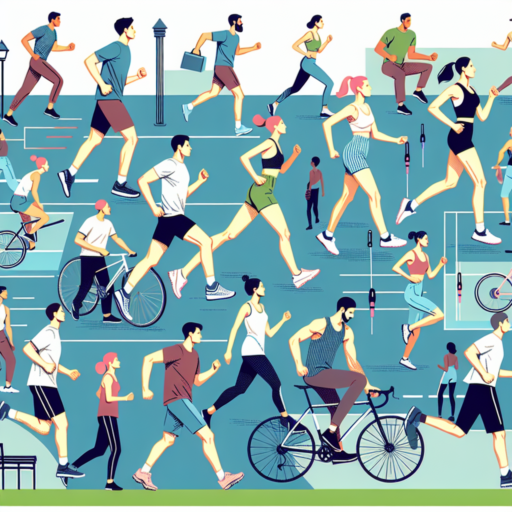How do you train speed on track?
Training for speed on the track requires a multifaceted approach, integrating both high-intensity sprint work and strength training exercises to improve your overall performance. To effectively enhance your speed, focus on the following key areas.
Integrate Sprint Intervals
Sprint intervals are fundamental for boosting your speed. Start with shorter distances, such as 100 meters, concentrating on maximum effort. Gradually increase the distance to 200 meters or 400 meters as your speed and stamina improve. The recovery period between each sprint is crucial; walk or jog slowly to ensure you’re ready for the next sprint without compromising on the intensity.
Strength Training
Strength training is an essential component of speed training on the track. Incorporate exercises that focus on the lower body, like squats and lunges, to build muscle strength. Don’t overlook plyometric exercises such as jump squats and box jumps, which enhance explosive power. This combination of strength and power exercises will significantly improve your start speed and the ability to maintain high speeds over distances.
Always remember, consistency is key in training. Incorporate these exercises into your routine 2-3 times a week, gradually increasing the intensity and complexity of the workouts as your body adapts. Balancing high-intensity sprint work with adequate rest and recovery will prevent injuries and ensure continuous improvement in your track speed.
How can I improve my track speed?
Improving your track speed is essential for athletes looking to elevate their performance to the next level. Whether you’re a beginner or an experienced runner, certain strategies can lead to significant improvements. Focus, dedication, and the right approach are key components to get you faster on the track.
Optimize Your Training Routine
Adjusting your training routine is fundamental. Incorporate a variety of workouts such as interval training, tempo runs, and long-distance sessions. Interval training, in particular, can drastically improve your speed as it trains your body to recover quickly between bursts of fast running. This type of training encourages your muscles and cardiovascular system to adapt to the demands of increased pace, effectively enhancing your speed over time.
Strengthen Core and Leg Muscles
Another vital aspect to focus on is strengthening your core and leg muscles. Stronger muscles can generate more power, which translates to faster speeds on the track. Exercises like squats, lunges, and leg presses can significantly bolster your leg strength, while planks and sit-ups will build your core, providing better stability and efficiency in your running form. Including these exercises in your weekly routine can lead to noticeable improvements in your track speed.
Focus on Running Technique
Improving your running technique also plays a crucial role in enhancing track speed. Pay attention to your posture, stride length, and foot placement. A more efficient running form reduces the risk of injury and increases your speed by minimizing energy loss. Consult with a coach or utilize video analysis to identify any inefficiencies in your technique and work on rectifying them. Remember, even small adjustments can lead to significant gains in speed.
What are 3 exercises to improve speed?
Improving speed is a goal for many athletes, from runners to swimmers, and even non-athletes who simply want to improve their physical fitness. To enhance speed, specific exercises that focus on strength, endurance, and technique are essential. Here we delve into three fundamental exercises that are widely recognized for their efficacy in boosting speed. These exercises target not just the leg muscles but also the core and other supporting muscle groups, providing a comprehensive approach to speed training.
1. High Knees
High Knees are a dynamic exercise that improves your running form while also increasing your speed. This exercise emphasizes your lower body’s fast-twitch muscle fibers, which are crucial for generating quick, explosive movements. High knees not only enhance your knee lift and stride frequency but also boost your heart rate, contributing to better stamina and endurance. To perform high knees effectively, ensure your back is straight, and you are bringing your knees up to waist level with each step, maintaining a brisk pace.
2. Plyometric Squats
Plyometric Squats, also known as jump squats, are integral for developing explosive strength in the legs and hips, directly correlating to improved speed. By incorporating this exercise into your routine, you significantly work on your power output, essential for sprinting and quick movements. The focus on landing softly and immediately jumping again enhances your muscles’ ability to contract rapidly, a key component of faster running speeds. Remember to keep your feet shoulder-width apart and your posture upright throughout the exercise.
3. Sprint Intervals
Sprint Intervals are perhaps the most direct method for improving speed. This high-intensity training modality not only elevates your maximum sprinting speed but also your overall endurance and ability to maintain high speeds over longer distances. The principle is to alternate between high-speed sprints and slower, recovery phases, allowing you to gradually increase the intensity and duration of the sprints. Regular practice of sprint intervals can lead to significant improvements in your speed by enhancing both your anaerobic and aerobic capacities, making it a cornerstone exercise for those looking to get faster.
No se han encontrado productos.
What is a track workout for top speed?
A track workout for top speed focuses on high-intensity training aimed at increasing an athlete’s maximum sprinting speed. These workouts commonly include a combination of sprint intervals, resistance training, and plyometrics designed to enhance explosive power, acceleration, and overall speed. By simulating race conditions and emphasizing speed work, athletes can target the specific muscle groups and systems involved in sprinting. This type of training is crucial for track and field athletes, football players, and anyone looking to improve their sprint speed.
During a typical track workout for top speed, athletes engage in various drills and exercises that challenge their speed and endurance limits. Sprint intervals, for instance, involve short bursts of high-speed running followed by recovery periods. These intervals are critical for developing fast-twitch muscle fibers, responsible for explosive acceleration. Plyometrics, which include jumping exercises, further enhance an athlete’s power and speed by improving leg strength and efficiency.
Consistency and progression are key elements of successful track workouts for top speed. As athletes adapt to the intensity of these workouts, it’s important to gradually increase the difficulty and variability of the exercises. This ensures continuous improvement and helps avoid performance plateaus. Implementing advanced techniques, such as resistance sprinting with parachutes or sleds, can also add a challenging aspect to the workout, pushing athletes to achieve new personal bests in speed.
In conclusion,iento, a track workout for top speed is meticulously designed to push athletes beyond their comfort zones, targeting the enhancement of sprinting capabilities through a structured and varied training approach.




